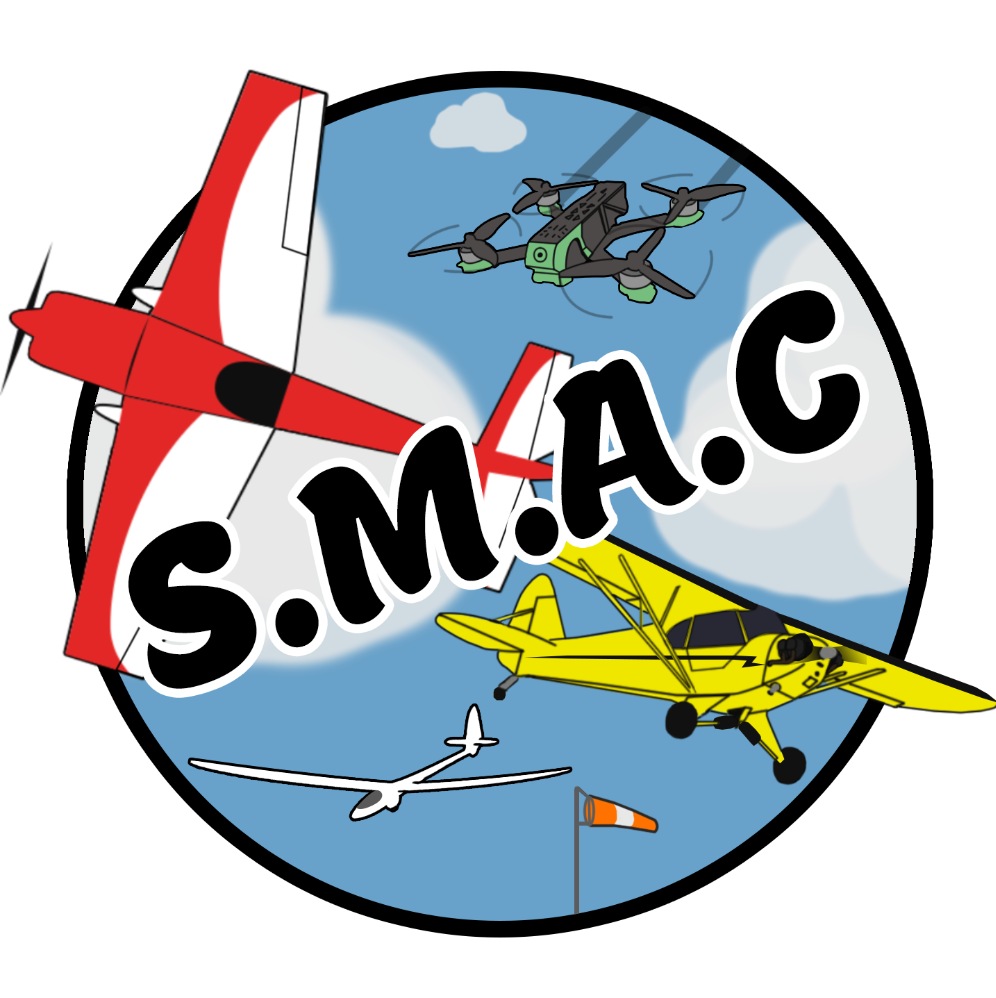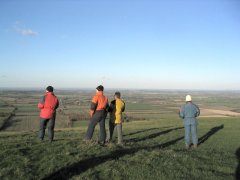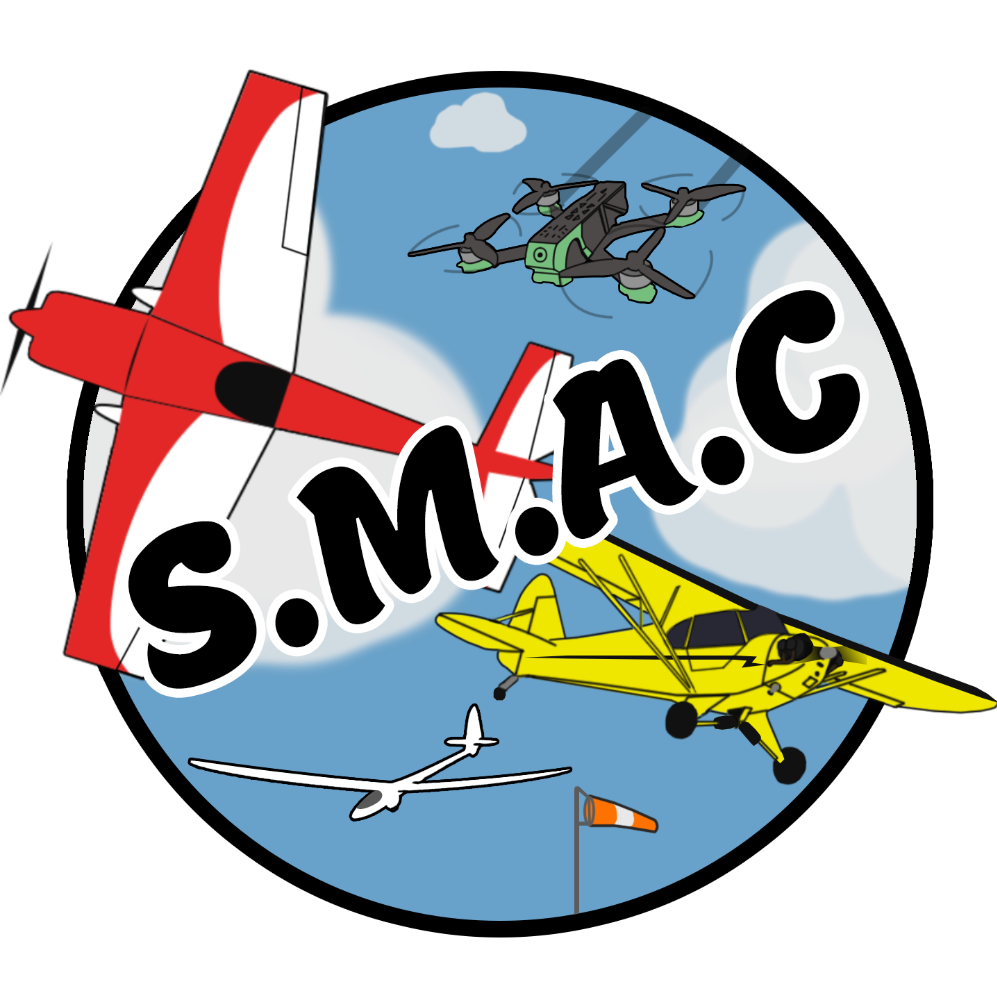General Information
Flying from our well-mown grass runway and using either 2.4 GHz or 35 MHz frequencies on even numbers, we fly both hand-launched and undercarriage models from the runway.
Pilots should hold a BMFA ‘A’ or ‘B’ certificate or have shown safe flying competence to a committee member.
Advice and help about how to successfully fly your model is readily available.
If you are nervous about a maiden flight, need advice about the correct model for your needs, concerned about a model or your ability to fly it, we have some very experienced pilots who can help.
***************************************************************************************************************
Electric Sport and Scale
This is the fastest growing area of aero modelling worldwide. It is environmentally friendly with no direct pollution and low noise impact.
Most purpose built electric models are either moulded foam or lightweight, balsa built models but most traditional IC powered models can be converted to electric due to the huge variety of modern brushless motors and lithium polymer batteries. The benefits are quiet operation, reliable power, lots of torque from low rpm and the ability to reverse thrust. The downsides are limited flight times, long battery charging times, and potential fire hazards of charging unattended Lithium Polymer batteries.
Multi-engine type models like the trio of B-17s below are far easier to fly with electric power than trying to tune multiple IC engines to matching rpm outputs.
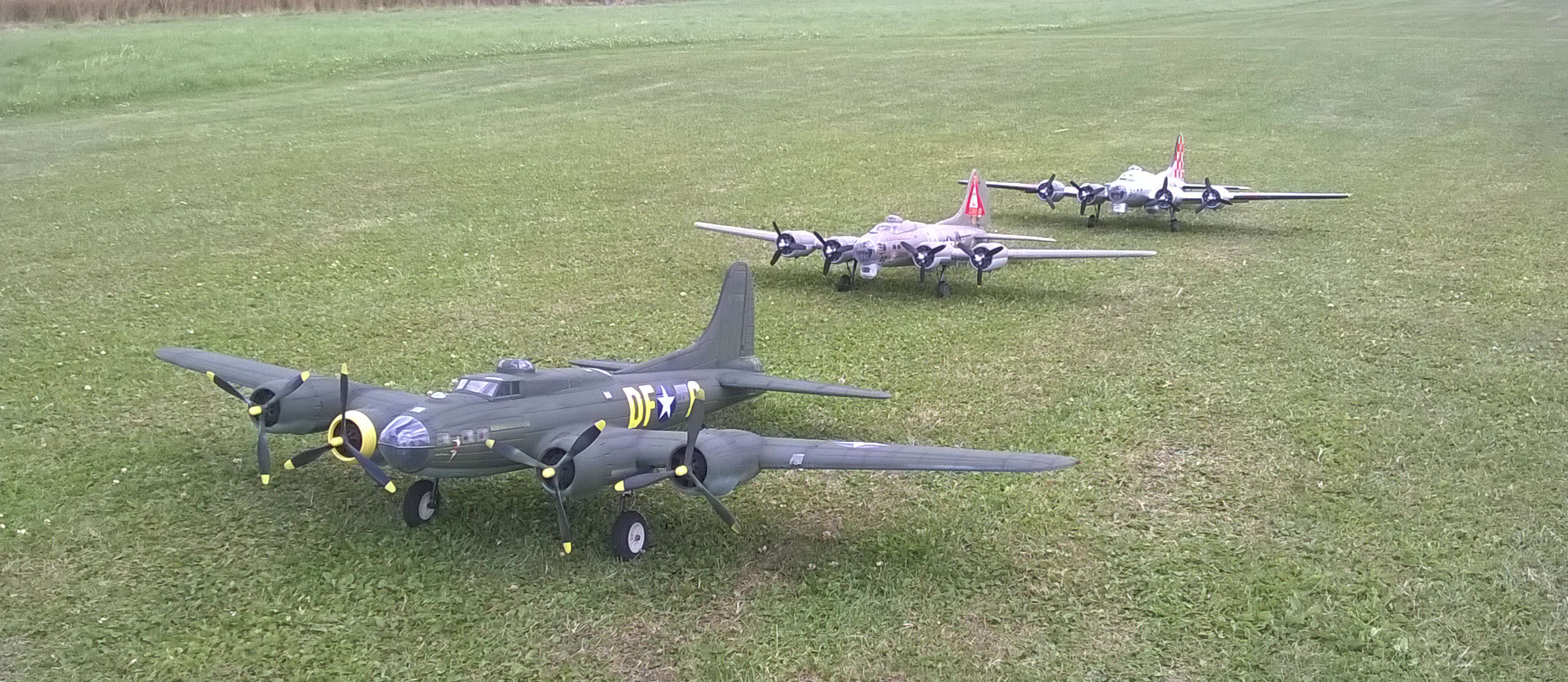
***************************************************************************************************************
Tom Pattison’s E-Flite Micro Draco
This diminutive 800mm span model has lots of scale detail with 4 blade prop, moulded rivets and panel lines, working flaps, nav lights and sprung undercarriage. It can take off and land in its own length and is a superb little flyer.

Tony Wheeler’s E-Flite Carbon Cub.
Large wheels and high lift wing make short take off and landings easy.
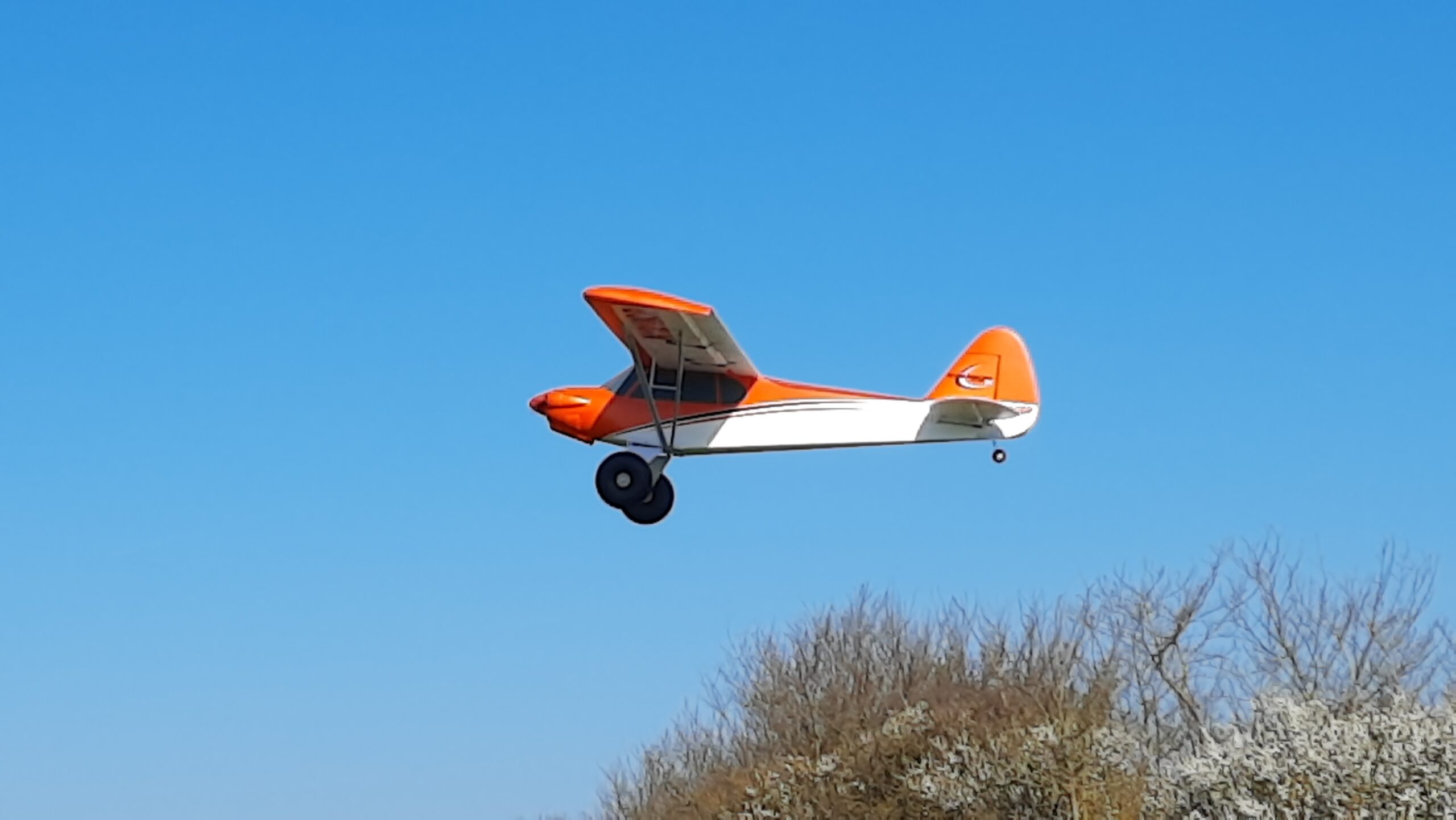
Phil Morgan’s Mercury Monocoupe
A classic 1950’s model originally designed for free flight powered by a 0.5cc-1.0cc diesel engine. Phil has converted it to radio control and electric power. A great example of bringing old model types into the 21st century.
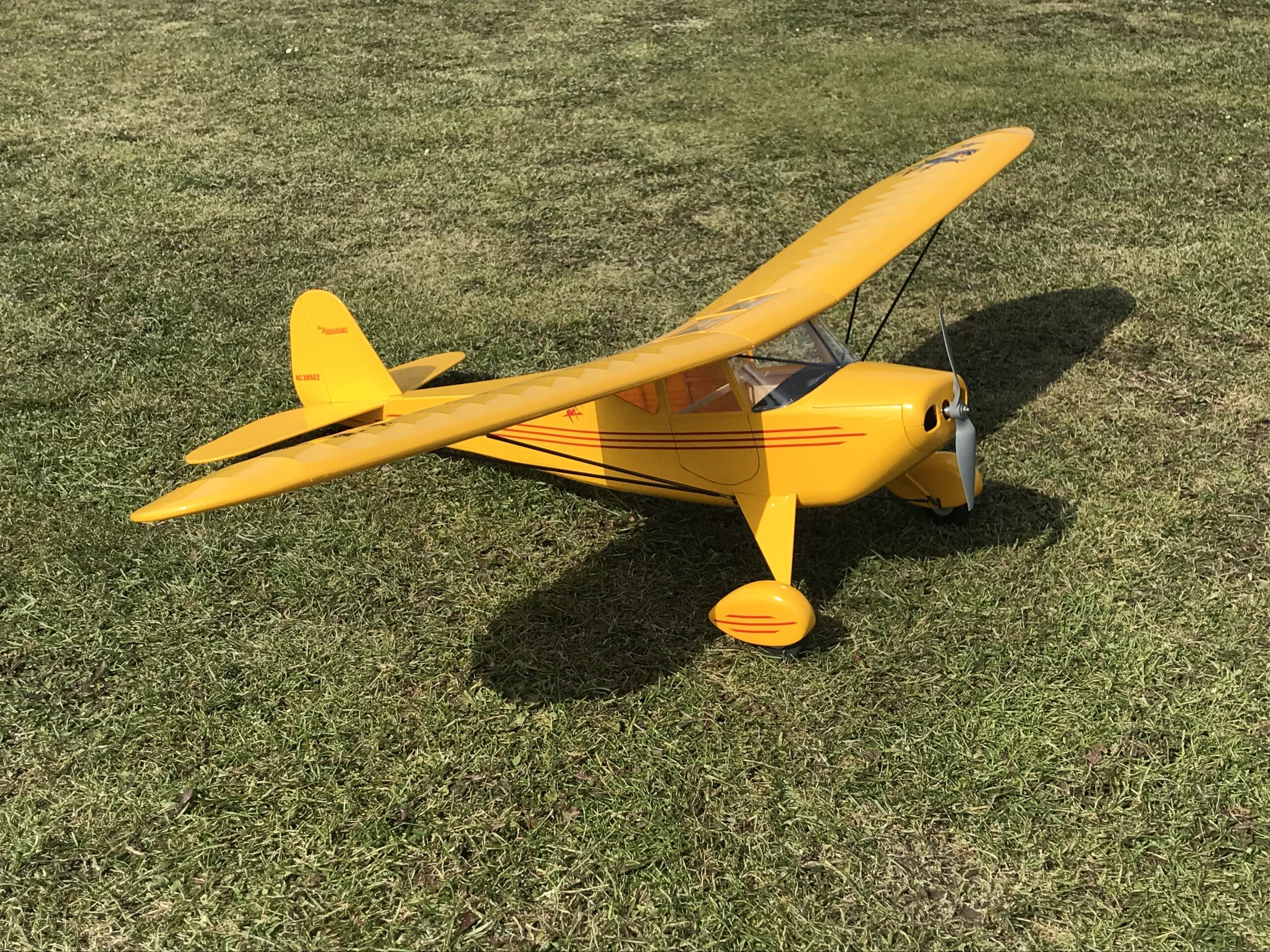
***************************************************************************************************************
Electric Ducted Fan (EDF)
Electric Ducted Fan models provide the look and performance of jet model types without the noise and cost of operating a gas turbine model. Most are made from moulded foam meaning they are lightweight, easily portable and available in many designs. The disadvantages are limited flight duration. They can be flown on-site but only after they have been noise tested and registered with the Club EDF Liaison. You should check with the Club before purchasing an EDF model to see if it is suitable for the site.
Tommy Abdy Collin’s Lockheed Martin F22 Raptor – A model by FreeWing of the USAF stealth fighter.
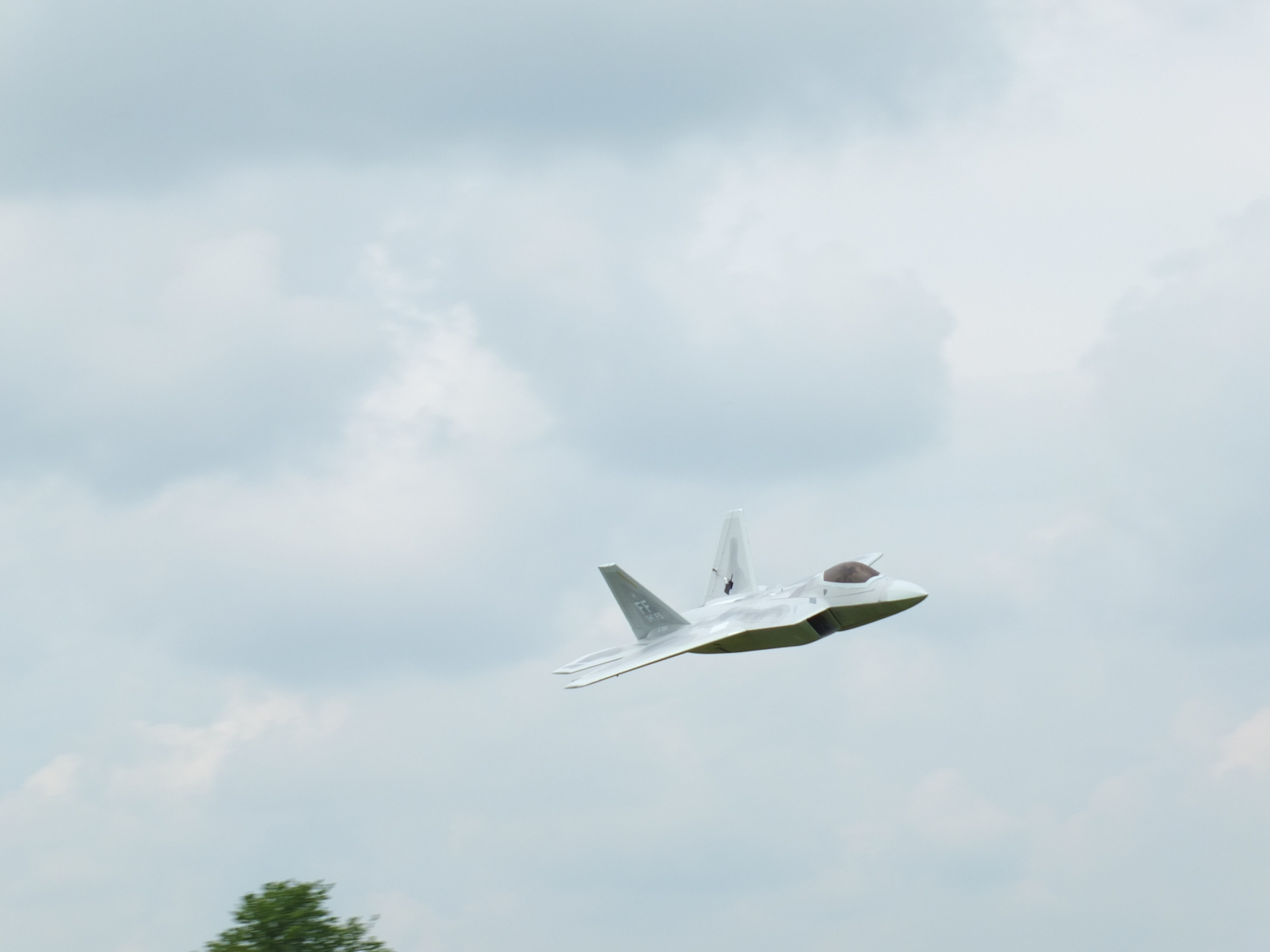
Craig Stebbings E-Flite Viper jet- This sleek model features a 90mm fan unit, retracts, landing and nav lights. Smooth and fast, it sounds fantastic and flies on rails.

Paul Mansfield’s Freewing Avanti S – A smart looking sport jet model
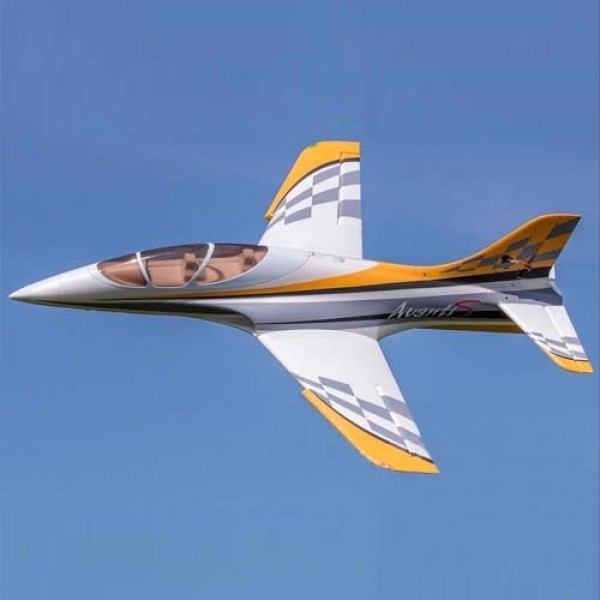
***************************************************************************************************************
Indoor electric flight
We currently have a small group of members who fly indoor models at a local sports hall during the winter months. Lightweight EPP foam models, both aerobatic and high wing trainers, are flown by experienced and beginner indoor fliers.
Dempster Hamilton demonstrates prop hanging with his Clik 21 aerobatic model
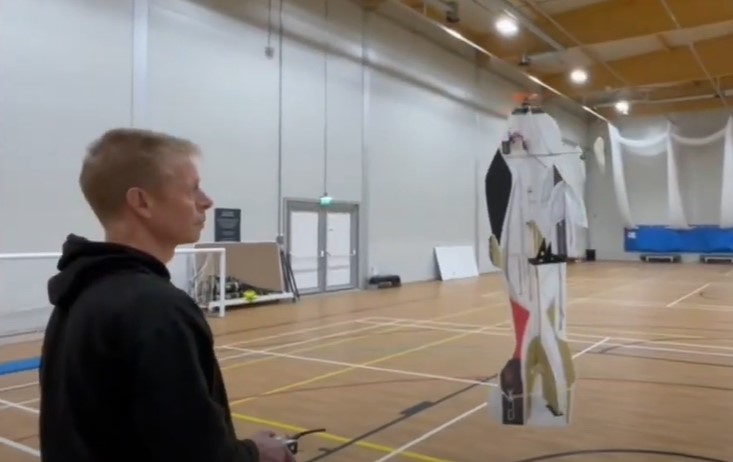
***************************************************************************************************************.
Electric Gliders
Electric sport and thermal gliders use a motor with a folding prop to get the model to altitude, doing away with the need for a bungee cord launcher or an aero-tow from another powered model. Once at height, the motor is switched off either by the pilot or by an onboard altimeter at a pre-set height and the prop folds flush to the fuselage so the glider can be flown as a soaring glider using thermals for lift. If the model should lose altitude then the pilot re-engages the motor and climbs back up rather than having to land and relaunch.
An FMS Fox electric sport glider with folding prop
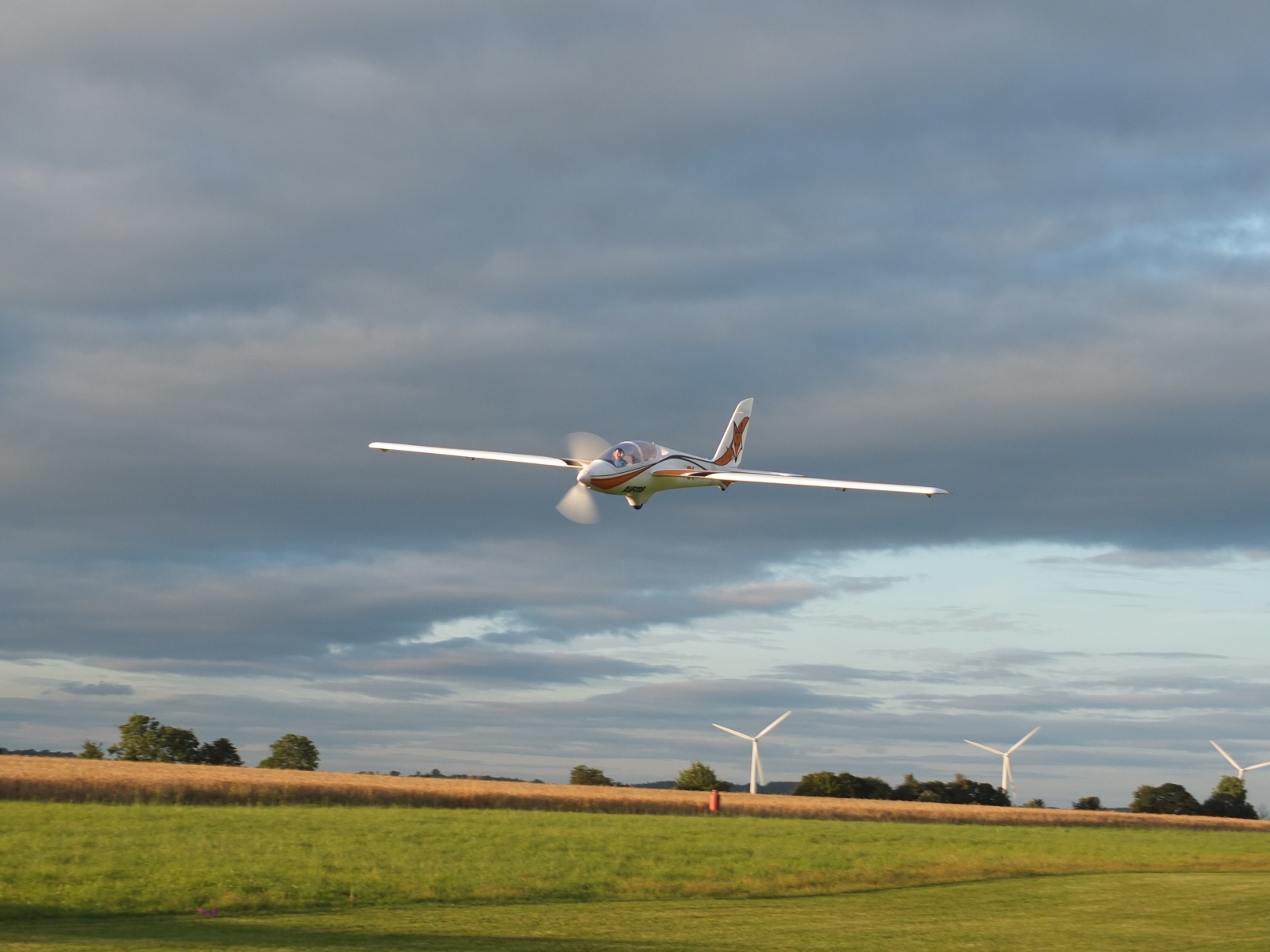
******************************************************************************************************
Slope Soaring
Some of our members fly slope soaring models from a variety of local sites, such as Liddington Hill, Barbury Castle and Uffington’s White Horse Hill, depending on the wind direction. These sites are ideal for various type of sport and scale gliders. Slope soaring is a unique discipline where you use the lift of the wind to fly at close quarters and see how your model reacts to the elements of the day.
Slope soaring off one of the many hills around Swindon
***************************************************************************************************************
